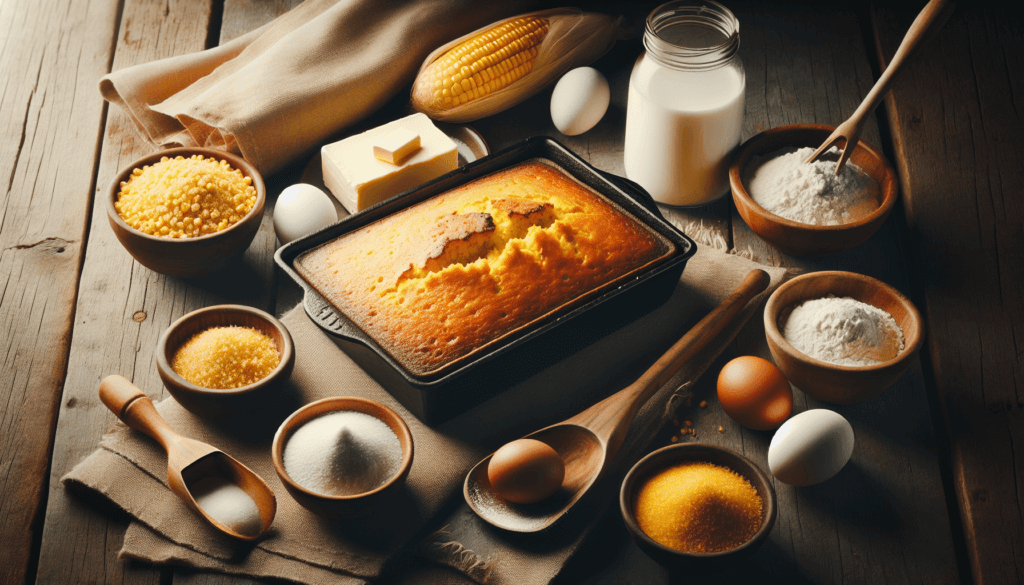Nothing beats the warm and comforting taste of homemade cornbread straight from the oven. If you’ve been on the lookout for a foolproof recipe that is sure to impress your friends and family, look no further. This easy homemade cornbread recipe will have your taste buds dancing with delight. With just a handful of simple ingredients and a few easy steps, you’ll be able to whip up a batch of golden, fluffy cornbread that will leave everyone asking for seconds. So grab your apron and let’s get started on this mouthwatering culinary adventure.
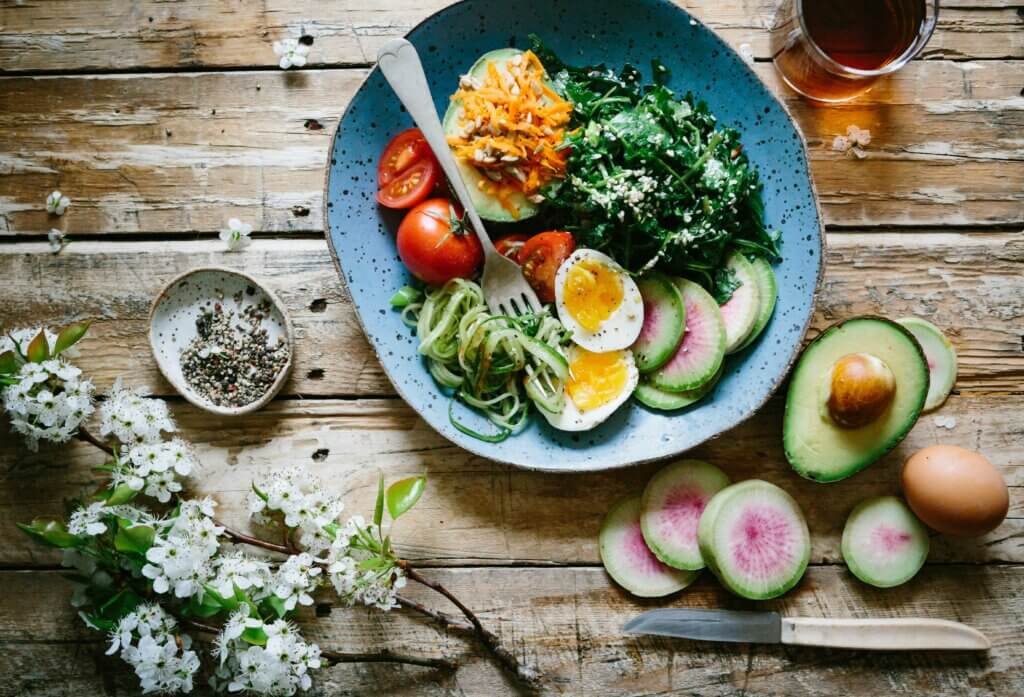
Ingredients
To make delicious homemade cornbread, you will need the following ingredients:
Cornmeal
Cornmeal is the star of the show when it comes to cornbread. It gives the bread its distinct corn flavor and adds a satisfying texture.
All-purpose flour
Mixing all-purpose flour with cornmeal helps give the cornbread a lighter texture and prevents it from becoming too dense.
Baking powder
Baking powder is necessary for the bread to rise and become light and fluffy. Make sure your baking powder is fresh to ensure the best results.
Salt
Adding salt to the cornbread batter enhances the overall flavor and balances the sweetness.
Sugar
Some people prefer a sweeter cornbread, while others like it more savory. Adding sugar will give your cornbread a touch of sweetness.
Milk
Milk adds moisture to the batter and helps bind all the ingredients together. You can use any type of milk you prefer, such as cow’s milk, almond milk, or even buttermilk for extra tenderness.
Eggs
Eggs serve as a binding agent and provide structure to the cornbread. They also add richness and help keep the bread moist.
Vegetable oil
Vegetable oil is used to grease the baking pan and prevents the cornbread from sticking. It also adds moisture to the bread.
Preparation
Now that you have gathered all the necessary ingredients, let’s go through the step-by-step process of making homemade cornbread:
Preheat the oven
Preheat your oven to 400°F (200°C) to ensure it reaches the desired temperature when it’s time to bake the cornbread.
Grease the baking pan
Grease a 9×9-inch baking pan with vegetable oil or cooking spray. This will prevent the cornbread from sticking to the pan and make it easier to remove once baked.
Mix dry ingredients
In a large mixing bowl, whisk together the cornmeal, all-purpose flour, baking powder, salt, and sugar. Make sure all the ingredients are well combined.
Add wet ingredients
In a separate bowl, whisk together the milk, eggs, and vegetable oil until well blended.
Combine wet and dry ingredients
Pour the wet ingredients into the bowl with the dry ingredients. Stir gently until the two mixtures are just combined. Be careful not to overmix, as this can result in a tougher cornbread.
Pour mixture into the pan
Pour the cornbread batter into the greased baking pan. Spread it evenly to ensure the bread bakes evenly.
Bake until golden brown
Place the pan in the preheated oven and bake for approximately 20-25 minutes, or until the cornbread is golden brown on top and a toothpick inserted into the center comes out clean.
Serve warm
Once the cornbread is baked, remove it from the oven and let it cool slightly. Serve it warm for the best taste and texture.
Variations
While the classic version of cornbread is delightful on its own, there are various tasty variations you can try to add a twist to your recipe:
Cheese cornbread
To make a cheesy version of cornbread, simply add shredded cheese of your choice, such as cheddar or Monterey Jack, to the batter. The melted cheese will create a gooey surprise with every bite.
Jalapeno cornbread
For a spicy kick, finely chop some jalapeno peppers and mix them into the cornbread batter. The jalapenos will add a burst of flavor and heat that complements the sweetness of the corn.
Bacon and cheddar cornbread
Indulge in the mouthwatering combination of crispy bacon and savory cheddar cheese by adding these two ingredients to your cornbread batter. The smoky and salty flavors of the bacon will take your cornbread to a whole new level.
Herb-infused cornbread
Experiment with different herbs and spices to infuse your cornbread with exciting flavors. Add herbs like rosemary, thyme, or basil to the batter for a fragrant and herbaceous twist.
Tips and Tricks
To help you achieve the best results with your homemade cornbread, here are some handy tips and tricks:
Use coarse cornmeal for a rustic texture
If you enjoy a more rustic and textured cornbread, opt for coarse cornmeal. It will give your bread a satisfying crunch and enhance the overall rustic feel.
Add chopped jalapenos for a spicy kick
If you love spice, don’t hesitate to add some chopped jalapenos to your cornbread batter. The heat from the peppers will elevate the flavor and give your cornbread an exciting kick.
Replace milk with buttermilk for extra tenderness
For an even more tender and moist cornbread, substitute the milk with buttermilk. The acidity of the buttermilk will add a subtle tanginess and make the bread incredibly soft.
Experiment with different herbs and spices
Don’t be afraid to get creative with your cornbread. Experiment with various herbs and spices to personalize the flavor. From garlic powder to paprika, the possibilities are endless.
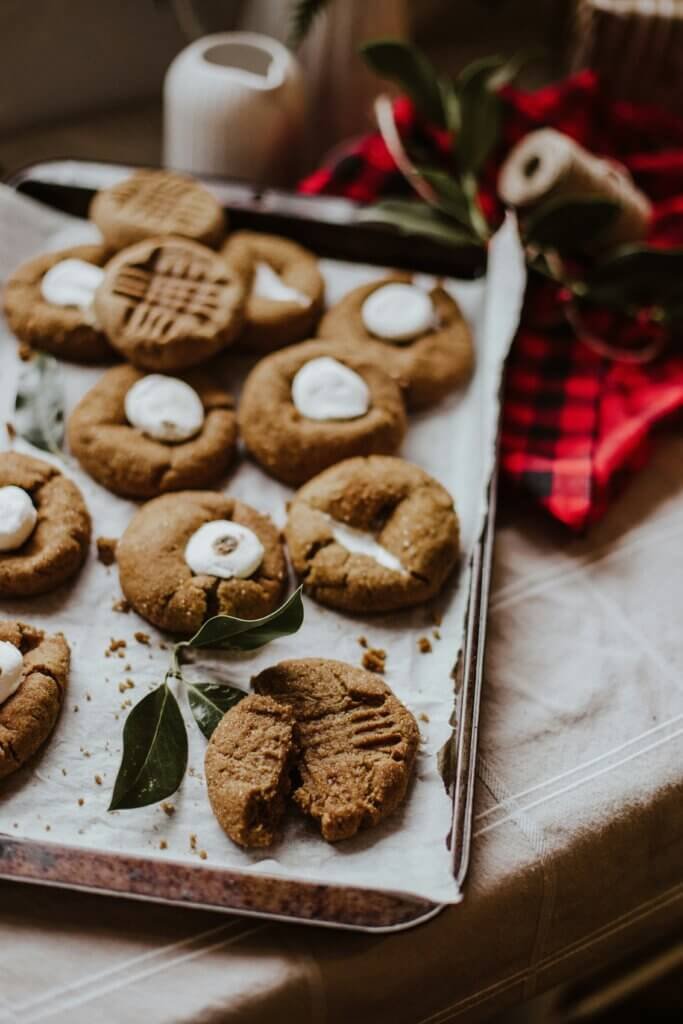
Serving Suggestions
Cornbread is a versatile delight that pairs well with a variety of dishes. Here are some tasty serving suggestions:
Serve with chili or soup
There’s nothing like a bowl of chili or a warm bowl of soup on a chilly day. Pair it with a slice of freshly baked cornbread for a comforting and satisfying meal.
Pair with barbecue or fried chicken
The smoky flavors of barbecue or the crispy goodness of fried chicken are a match made in heaven with cornbread. The combination of the savory meat and the sweet, fluffy cornbread is simply irresistible.
Enjoy with honey and butter
For a simple and decadent treat, enjoy your cornbread with a generous drizzle of honey and a slather of butter. The sweetness of the honey and the richness of the butter complement the cornbread beautifully.
Storage
If you have any leftovers or want to make cornbread in advance, here’s how you can properly store it:
Allow to cool completely
Before storing your cornbread, make sure it has completely cooled down. This will prevent condensation and maintain the texture of the bread.
Wrap tightly in plastic wrap
Once cooled, tightly wrap the cornbread in plastic wrap. This will help keep it fresh and prevent it from drying out.
Store at room temperature for 2-3 days
You can store the wrapped cornbread at room temperature for up to 2-3 days. Make sure to keep it in a cool and dry place away from direct sunlight.
Freeze for longer storage
If you want to prolong the shelf life of your cornbread, you can freeze it. Wrap the cornbread tightly in plastic wrap, followed by aluminum foil or a freezer bag. It can be frozen for up to 3 months. To thaw, simply leave it in the refrigerator overnight or reheat it in a preheated oven.
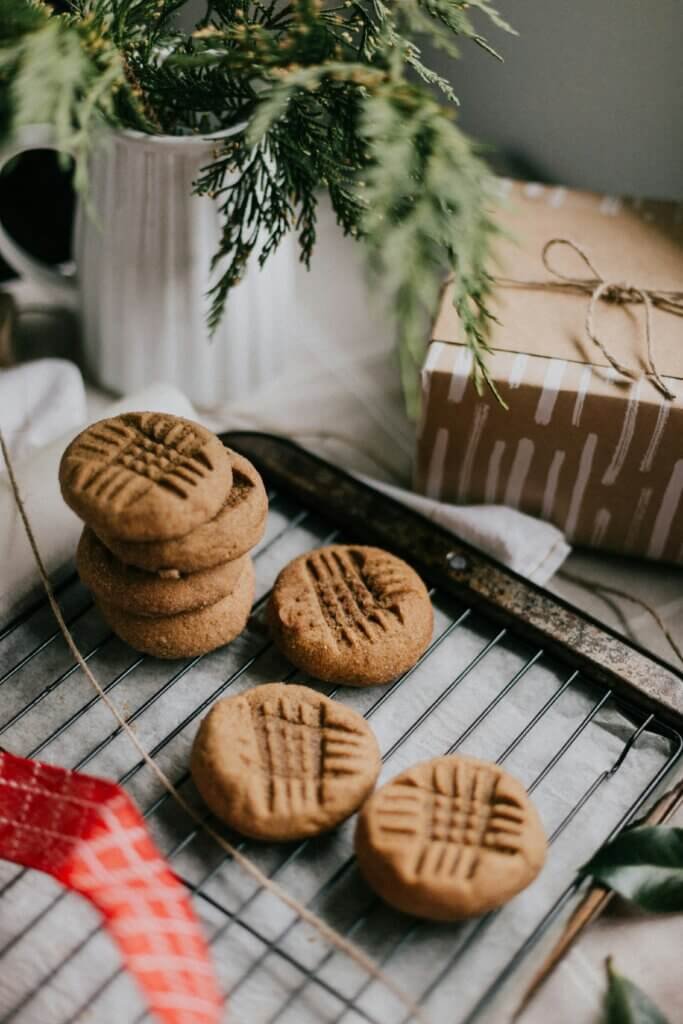
History of Cornbread
Cornbread has a rich history that can be traced back to Native Americans. They were the first to make cornbread by grinding cornmeal and combining it with water. The method of making cornbread eventually spread to early European settlers in America, who adopted the traditional Native American recipe and added their own twist.
Cornbread became particularly popular in the Southern United States, where corn was plentiful and easily accessible. Over time, it became a staple in Southern cuisine and an integral part of African American cooking, often served with dishes like collard greens, black-eyed peas, and fried chicken.
As cornbread spread throughout the country, regional variations began to emerge. Some areas preferred a sweeter cornbread, while others favored a more savory version. Different cooking methods and ingredients have led to diverse interpretations of cornbread, making it a versatile and beloved dish across America.
Health Benefits
In addition to being delicious, cornbread also offers some health benefits:
Good source of dietary fiber
Cornmeal, the main ingredient in cornbread, is rich in dietary fiber. Fiber is essential for a healthy digestion system and can help prevent constipation.
Rich in essential minerals
Cornbread is a good source of essential minerals, such as iron, magnesium, and phosphorus. These minerals play a crucial role in maintaining bone health, energy production, and overall well-being.
Gluten-free option with cornmeal
For those who are sensitive to gluten or follow a gluten-free diet, cornbread made with cornmeal is an excellent alternative. It allows people with gluten intolerance to still enjoy a tasty bread option.
Can be made healthier with substitutions
If you’re looking to make your cornbread a bit healthier, there are simple substitutions you can make. You can replace some or all of the all-purpose flour with whole wheat flour for added fiber. Additionally, you can reduce the amount of sugar or use a natural sweetener like honey or maple syrup.
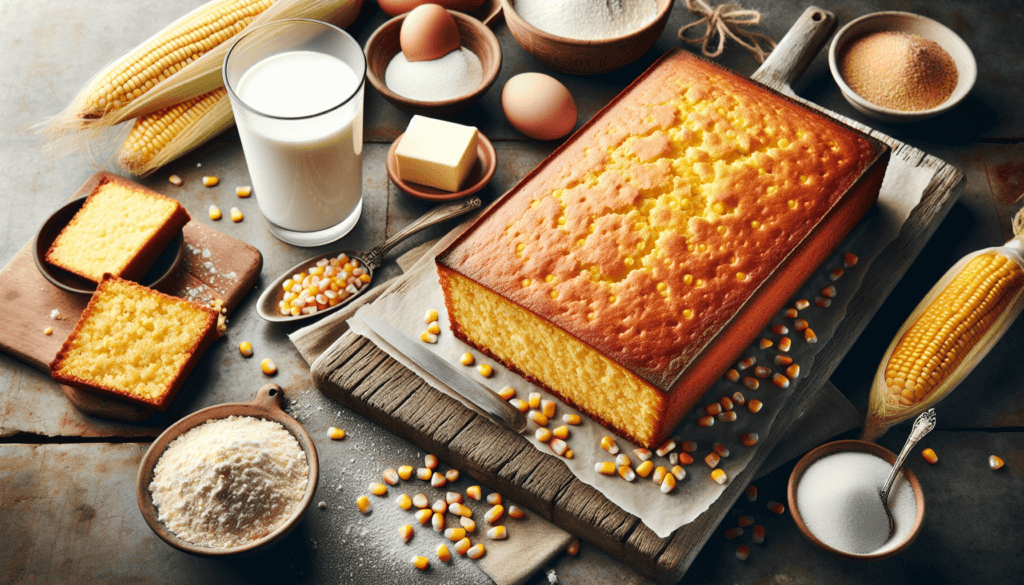
Common Mistakes
Avoid these common mistakes when making cornbread to ensure the best results:
Overmixing the batter
When combining the wet and dry ingredients, it’s essential not to overmix the batter. Overmixing can lead to a dense and tough cornbread. Remember, a few lumps are perfectly fine.
Using expired baking powder
Make sure to check the expiration date of your baking powder before using it. Expired baking powder may not produce the desired rise in the cornbread, resulting in a flat and dense loaf.
Using too much sugar
While some people enjoy a sweeter cornbread, going overboard with the sugar can overpower the natural flavors of the cornmeal. It’s best to use the recommended amount or adjust according to your preference.
Baking at the wrong temperature
Make sure your oven is properly preheated to the specified temperature before baking the cornbread. Baking at too high or too low of a temperature can affect the texture and result in unevenly baked cornbread.
Fun Facts
Here are some fun facts about cornbread to pique your interest:
Cornbread is the official state bread of Texas
In 2005, the Texas Legislature designated cornbread as the official state bread of Texas. This recognition further solidifies the deep-rooted love for cornbread in Texas and highlights its cultural significance.
Cornbread is often served with soul food dishes
Soul food, a popular cuisine in African American culture, often features cornbread as a staple side dish. It is commonly served alongside dishes like collard greens, black-eyed peas, and fried chicken to create a well-rounded, comforting meal.
The texture of cornbread ranges from cake-like to crumbly
Cornbread can have various textures, depending on the ingredients and cooking method used. Some prefer a cake-like consistency, similar to a cornbread muffin, while others enjoy a crumbly texture that pairs well with butter and honey.
A cornbread Festival is held annually in Tennessee
Each year, the National Cornbread Festival takes place in South Pittsburg, Tennessee, to celebrate the beloved bread. The festival attracts thousands of visitors and features various cornbread-related activities, including cook-offs and tasting events.
In conclusion, homemade cornbread is a versatile and delicious bread that can be enjoyed in many ways. Whether you prefer it plain, with a cheesy twist, or packed with jalapenos, cornbread is a delightful addition to any meal. With a rich history and plenty of health benefits, cornbread continues to be a beloved dish that brings people together. So grab your apron, gather the ingredients, and get ready to bake your very own batch of mouthwatering cornbread. Your taste buds will thank you!
